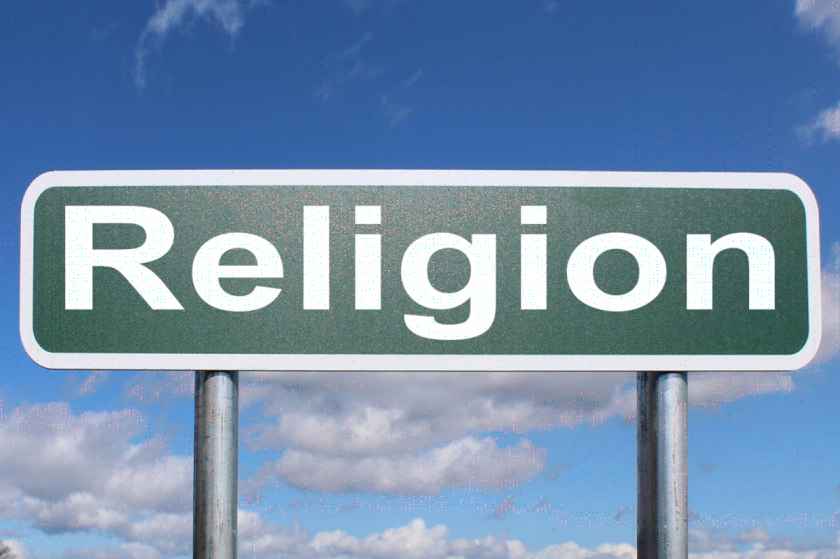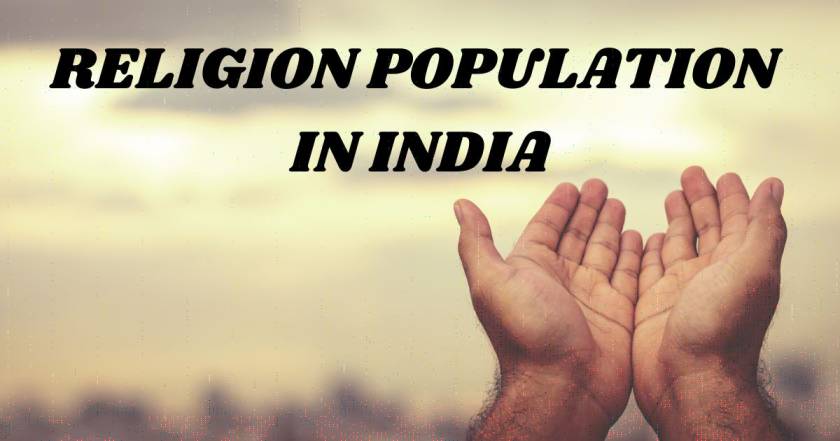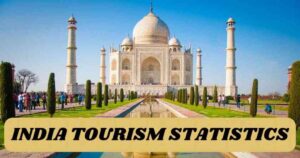India is famous for its diverse culture and rich history. It has many different religions practiced by its people. The main ones include Hinduism, Islam, Christianity, Sikhism, Buddhism, Jainism, and various indigenous Adivasi beliefs. The variety of religions in India reflects its long tradition of spirituality and coexistence. This diversity highlights India’s inclusive and harmonious society, where people from different faiths live together in peace.
The Percentages of religions in India include Hindus at roughly 79.8%. Hinduism stands as the largest religion in India. Islam follows as the second-largest religion, representing roughly 14.2% of the population. Christianity constitutes about 2.3%, while Sikhism accounts for approximately 1.7%. Buddhism and Jainism have smaller but significant populations, with around 0.7% and 0.4% respectively. Adivasi religions, including various indigenous beliefs, contribute to about 0.5% of the population. Additionally, individuals identifying as having no religion or other faiths make up a smaller portion, collectively constituting around 0.4% of the population. These figures illustrate the religious diversity and demographic distribution within India’s vast population.
Religion Population in India
Religion plays a pivotal role in shaping the cultural, social, and political landscape of India. The religious diversity of the country is a testament to its rich heritage and centuries-old traditions. The table below provides a detailed breakdown of the population numbers and percentages of major religions as well as other significant religious groups in India, shedding light on their demographic significance and trends over time.
In this analysis of religion population in India, it’s important to note that Population (2011) data is sourced from the Indian census data released by the Indian government, while projected Population (2024) data is based on UN population data. This distinction underscores the reliability and credibility of the population numbers presented in the table below, which provides an in-depth overview of the population numbers and percentages of major religions as well as other significant religious groups in India.
| RELIGION | PERCENTAGE | POPULATION (2011) | PROJECTED POPULATION (2024) |
|---|---|---|---|
| Hinduism | 79.8% | 966,089,301 | 1,150,719,370 |
| Islam | 14.2% | 172,138,476 | 204,760,392 |
| Christianity | 2.3% | 27,918,662 | 33,215,237 |
| Sikhism | 1.7% | 20,588,046 | 24,502,824 |
| Buddhism | 0.7% | 8,475,985 | 10,091,038 |
| Adivasi | 0.5% | 6,054,274 | 7,208,599 |
| Jainism | 0.4% | 4,843,420 | 5,766,879 |
| No religion | 0.25% | 3,027,137 | 3,604,299 |
| Other | 0.15% | 1,816,727 | 2,162,079 |
Indian Religion Population Numbers and Trends:
- Hinduism: Hinduism, as the dominant religion in India, commands a significant majority of the population. With over 966,089,301 adherents in 2011, Hinduism constituted approximately 79.8% of the country’s total population. By 2024, this number is estimated to have surged to an impressive 1,150,719,370, showcasing the enduring influence and widespread adherence to Hindu traditions across the nation. The steady growth of the Hindu population reflects its deep-rooted cultural and spiritual significance in Indian society.
- Islam: Islam, the second-largest religion in India, boasts a sizable population share. In 2011, the Muslim population stood at around 172,138,476, representing roughly 14.2% of the total population. Over the years, this population has witnessed steady growth, reaching an estimated 204,760,392 by 2024. This growth underscores the significant presence and demographic importance of the Muslim community in India, highlighting its contributions to the country’s diverse religious landscape.
- Christianity: Christianity, though a minority religion in India, has a notable presence in the country. With nearly 27,918,662 adherents in 2011, Christianity constituted about 2.3% of India’s population. By 2024, the Christian population is projected to increase to approximately 33,215,237, reflecting a steady growth trajectory. Despite being a minority, Christians in India have made significant contributions to various sectors, including education, healthcare, and social welfare, enriching the country’s cultural fabric.
- Sikhism: Sikhism, originating in the Punjab region, has a distinct identity and cultural heritage. In 2011, the Sikh population stood at over 20,588,046, accounting for approximately 1.7% of India’s total population. By 2024, the Sikh population is expected to exceed 24,502,824, reflecting the community’s continued presence and influence in Indian society. Sikhs have made significant contributions to India’s history, culture, and economy, embodying the spirit of resilience and communal harmony.
- Buddhism, Jainism, Adivasi, and Other Religions: Buddhism, Jainism, Adivasi beliefs, and other minority religions collectively constitute a smaller percentage of India’s population. The Buddhist population stands at over 8,475,985 in 2011, while the Jain population is around 4,843,420. Adivasi beliefs, encompassing various indigenous tribal communities, have a population of over 6,054,274. Other religions, including Baháʼí Faith, Zoroastrianism, and Judaism, collectively have a population of nearly 1,816,727.

Number of Muslim in India
- The Muslim numbers in India was approximately 172,138,476 in 2011.
- The estimated Muslim population in India for 2024 is projected to be around 204,760,392.
| RELIGION | PERCENTAGE | POPULATION (2011) | PROJECTED POPULATION (2024) |
|---|---|---|---|
| Islam | 14.2% | 172,138,476 | 204,760,392 |
The Muslim population in India is one of the largest in the world, contributing significantly to the country’s religious and cultural diversity. Understanding the demographic trends, distribution, and socio-economic characteristics of the Muslim community is crucial for addressing their unique needs and ensuring inclusive development. This detailed analysis provides insights into the numbers.
Muslim Population Numbers in India:
- Current Population: As of the 2011 Indian census data, the Muslim population in India was approximately 172,138,476, constituting around 14.2% of the total population.
- Projected Population: Based on UN population data projections, the Muslim population in India is estimated to reach around 204,760,392 by 2024. This significant demographic presence underscores the importance of the Muslim community in the country’s socio-cultural fabric.
The Muslim population in India is distributed across different states and regions, with certain states having larger Muslim populations than others. States such as Uttar Pradesh, West Bengal, and Bihar have significant Muslim populations, while regions like Kerala and Jammu and Kashmir also have notable Muslim communities. The distribution of the Muslim population varies within states, with urban areas often having higher concentrations of Muslims compared to rural areas.
Number of Christian in India
- The Christian numbers in India was approximately 27,918,662 in 2011.
- The estimated Christian population in India for 2024 is projected to be around 33,215,237.
| RELIGION | PERCENTAGE | POPULATION (2011) | PROJECTED POPULATION (2024) |
|---|---|---|---|
| Christianity | 2.3% | 27,918,662 | 33,215,237 |
The number of Christians in India is a significant demographic aspect that contributes to the country’s religious diversity and cultural tapestry. Understanding the trends, distribution, and socio-economic characteristics of the Christian population is crucial for gaining insights into their societal impact and addressing their unique needs.
Christain Population Numbers in India:
- Current Population: As of the 2011 Indian census data, the Christian population in India was approximately 27,918,662, constituting a percentage of the total population.
- Projected Population: Based on UN population data projections, the Christian population in India is estimated to reach around 33,215,237 by 2024. This projected increase underscores the ongoing growth and demographic significance of the Christian community in India.
The Christian population in India is distributed across different states and regions, with varying concentrations in urban and rural areas. States such as Kerala, Tamil Nadu, Goa, and parts of Northeast India have significant Christian communities, while other states may have smaller populations.
The socio-economic characteristics of the Christian population in India vary widely. In some regions, Christians may have relatively higher levels of education, economic status, and access to healthcare compared to the general population. However, disparities may exist in marginalized communities, where Christians face socio-economic challenges similar to other minority groups.
The Christian community in India has made significant contributions to the country’s cultural landscape, including art, music, literature, and education. Christian institutions such as schools, colleges, hospitals, and charitable organizations play a vital role in providing educational and healthcare services to communities across India.
Disclaimer: The data research report provided here is sourced from various channels, aiming for accuracy but unable to guarantee every detail’s absolute precision. It is intended for informational purposes only, and users are urged to verify critical information independently before making decisions. We are not liable for any financial loss, errors, or damages arising from the use of this information. While our team strives for accuracy, the dynamic nature of data means we cannot verify every fact. Your understanding and discretion are valued.







